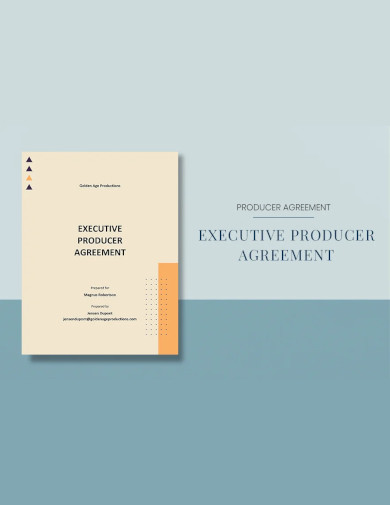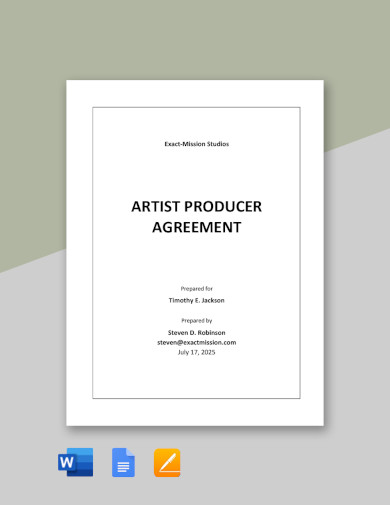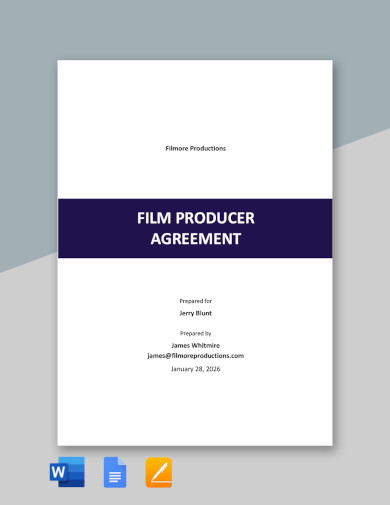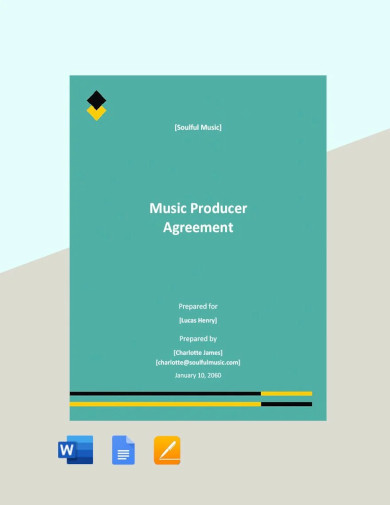
Navigating the complexities of the entertainment industry requires solid agreements, and a Producer Agreement is a cornerstone document in this realm. This essential sample contract outlines the responsibilities, rights, and compensation for producers, ensuring clarity and fairness in creative projects. Whether you’re an experienced producer or just starting, understanding the nuances of a Producer Agreement is crucial for successful collaborations in film, television, or music production. Stay informed and protected with a well-crafted Producer Agreement, tailored to meet the specific needs of your project.





A Producer Agreement is a pivotal legal document in the entertainment industry, particularly in film, television, and music production. This agreement outlines the terms and conditions between a producer and a client, which could be a studio, network, or independent party. It serves as a formal contract that defines the scope of the producer’s responsibilities, compensation, rights, and obligations.
Understanding the Key Elements of a Producer Agreement
1. Defining Roles and Responsibilities
The agreement clearly outlines what is expected from the producer. This includes tasks related to production management, budgeting, staffing, and adherence to the project’s creative vision.
2. Financial Clarity and Security
It specifies the payment terms, including how much the producer will be paid, the payment schedule, and any conditions tied to compensation. This financial clarity is crucial for both parties’ planning and budgeting.
3. Legal Protection
A Producer Agreement provides legal protection for both the producer and the client. It serves as a legally binding document that can be referred to in case of disputes or misunderstandings.
4. Intellectual Property Rights
The agreement addresses the ownership of the final product, including rights to distribution and future use. This is essential for protecting intellectual property and determining future revenue streams.
5. Project Management and Quality Control
By defining the producer’s role and responsibilities, the agreement ensures that there is a clear management structure in place, which can enhance the quality and efficiency of the production process.
6. Dispute Resolution
In the event of disagreements or conflicts, the Producer Agreement often includes clauses for dispute resolution, providing a framework for resolving issues amicably and professionally.
7. Crediting and Recognition
The agreement stipulates how the producer will be credited in the project, which is important for the producer’s professional reputation and future career opportunities.
8. Confidentiality Assurance
Producers often have access to sensitive information. The agreement can include confidentiality clauses to protect proprietary information and trade secrets.
9. Setting Expectations for Project Completion
It includes timelines and deadlines, ensuring that both parties have a clear understanding of the project’s schedule and expected completion date.
10. Flexibility and Adaptability
The agreement can be amended or modified if the project’s scope changes, providing flexibility to adapt to new circumstances or requirements.
In the entertainment industry, Producer Agreements come in various sample forms, each tailored to specific types of projects and roles. Understanding these different types is crucial for both producers and clients to ensure that the right kind of agreement is in place for their specific needs. Here are some common types of Producer Agreements:
1. Film Producer Agreement
This agreement is specific to film production. It covers aspects like development, pre-production, production, post-production, and distribution. The agreement sample outlines the producer’s responsibilities in managing the film’s budget, schedule, casting, crew, and overall production process.
2. Television Producer Agreement
Tailored for TV productions, this agreement often includes details about episodic production, series development, pilot production, and ongoing series management. It may also address issues specific to television, such as network relationships and episode delivery sample schedules.
3. Music Producer Agreement
In the music industry, this agreement outlines the producer’s role in recording, mixing, and mastering music tracks. It often includes details about royalties, rights to the final music tracks, and the producer’s involvement in the creative process.
4. Theatre Producer Agreement
This type of agreement is used in stage productions. It covers aspects like casting, rehearsals, live performances, and possibly touring. The agreement may also detail the producer’s role in securing funding, managing the budget, and marketing the production.
Often used in both film and television, this agreement is for individuals who play a more supervisory role in the production. Executive producers may not be involved in the day-to-day production but are instrumental in securing financing, managing key relationships, and overseeing the project’s overall direction.
6. Co-Producer Agreement
This agreement is used when two or more entities or individuals share the production responsibilities. It defines the roles, responsibilities, and profit-sharing arrangements between the co-producers.
7. Associate Producer Agreement
Typically for individuals who have a lesser or more specific role in the production process. This agreement outlines their duties, which might include assisting the main producer, managing smaller production elements, or handling administrative tasks.
8. Digital Content Producer Agreement
With the rise of digital media, this agreement is becoming more common. It’s tailored for producers working on digital content like web series, podcasts, and online videos. The agreement covers aspects like digital rights, content distribution channels, and monetization strategies. You can also see more templates like Producer Contract Samples.